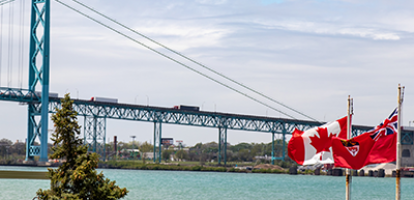From: Parisa Mahboubi and Henry Lotin
To: Canada’s Immigration Watchers
Date: October 3, 2023
Re: Housing and international student numbers: Some suggestions.
As Canada grapples with surging housing demand, the federal government is exploring solutions to limit the influx of international students. Two strategies have been under consideration: setting a cap on international student visas and introducing a two-tiered system known as the trusted institution framework for Designated Learning Institutions (DLIs).
Both approaches raise concerns and have implementation issues. Are there other solutions?
International students contribute to the growth and financial stability of postsecondary institutions while enhancing the quality of education and research. They are also a source of labour supply and serve as potential candidates for permanent residency. At the same time, a dramatic surge in the number of students can undermine the quality of education, disrupt the labour market and worsen the housing crisis. This calls for tighter admission rules.
International student numbers have doubled since 2016 and now exceed 800,000. Simultaneously, the national rental apartment vacancy rate plummeted to a near-historic low of 1.9 percent in 2022.
Canada's experience is not unique. Other major international student destinations like Australia, the Netherlands and the UK face the same issue and are planning to take actions or seek solutions.
Authorities in Amsterdam are encouraging landlords to rent out spare rooms and the University of Amsterdam has issued a warning, advising students not to come unless they have secured proper housing.
Australia is also tightening student visa requirements. For example, it is implementing a 17-percent increase in the minimum savings requirement for applying international students, raising it to $24,505AU to help ensure their financial stability.
In contrast, Canada requires foreign students to demonstrate $10,000 in financial resources, and the ability to pay tuition for the first year. This can give a misleading impression about the cost of living in Canada.
Instead, like the UK and the Netherlands, Canada has considered imposing a visa cap. This, however, may threaten the financial health of postsecondary institutions, which now rely on foreign students for more than 43 percent of their total tuition revenue. One option would be a limit on the share of international student enrollment at a specific rate across institutions. While it might address the distribution issue with a cap, it also fails to address the financial concern as some institutions rely more heavily on international tuition fees.
Canada has also considered establishing a trusted institution framework to expedite visa processing for certain institutions among Designated Learning Institutions (DLI) – institutions that that are qualified to admit international students. Not only are there issues with criteria to assess and rank institutions (e.g. being open to manipulation and including external factors over which institutions have no or limited control), this approach might make any student hesitate to choose institutions that don’t sport a ‘trusted’ label.
C.D. Howe Institute publications previously have highlighted the need for a rigorous requirements for selection of qualifying institutions to host international students. This would reduce the total number of DLIs, affecting the number of international student visa applications while ensuring the integrity of our system.
Canada also needs to raise the minimum financial support requirement to a realistic level. Finally, those who benefit from international students must take a more proactive role in identifying and creating new housing stock. This can reduce students’ economic and personal hardship as well as assuring other Canadians that there will be enough affordable housing for them as well. Without a concerted response, Canada’s national consensus in favour of immigration might fray.
Canadian post-secondary institutions must swiftly build low-cost housing units geared towards international students. This requires involvement of and collaboration between various groups including post secondary institutions, governments, utilities, and other arms-length public entities.
We recommend establishing a coordinating agency among colleges and universities on procuring housing. It needs to secure leases on public or post-secondary lands at little to no cost, for a limited period to build mobile home and modular housing communities on these leased lands, similar to the ATCO communities built for veterans.
As Canada seeks to strike a balance between international student enrollments and addressing its housing crisis, it must carefully weigh its options and consider alternatives that better align with the nation's educational and economic needs while ensuring a fair and sustainable approach for all stakeholders.
Parisa Mahboubi is a Senior Policy Analyst at the C.D. Howe Institute and Henry Lotin is an economist and principal of Integrative Trade and Economics and a retired Canadian diplomat.
To send a comment or leave feedback, email us at blog@cdhowe.org.
The views expressed here are those of the authors. The C.D. Howe Institute does not take corporate positions on policy matters.





